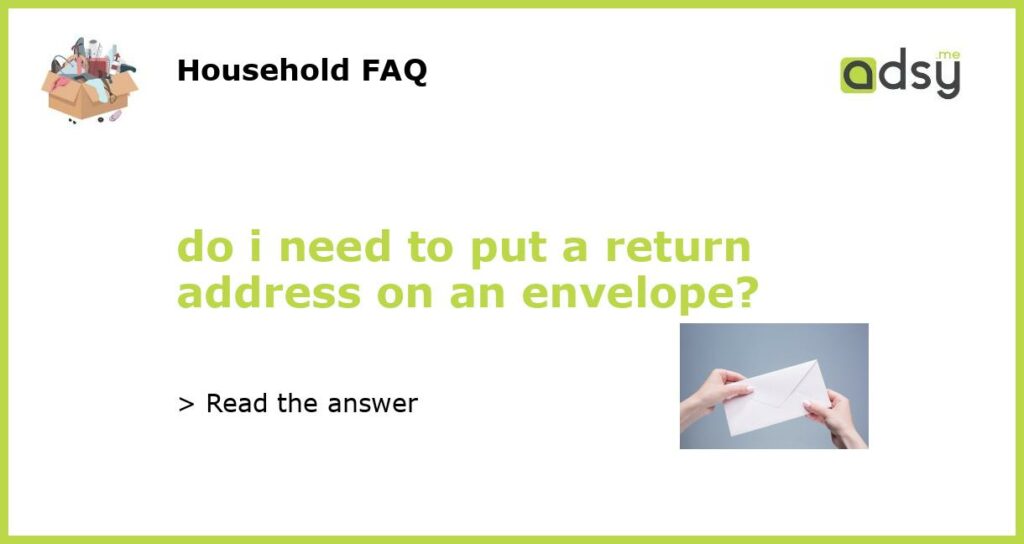Why is a return address important?
When sending mail, it is important to include a return address on the envelope. This is the address where the Postal Service can return the envelope in the event it is undeliverable. Without a return address, the Postal Service may be unable to return the envelope to the sender and it will be marked as “undeliverable.”
How to properly format a return address
When formatting a return address on an envelope, it should be placed in the upper left-hand corner of the envelope. The correct format should include the sender’s full name, street address, city, state, and ZIP code. It is important to make sure the return address is legible and easy to read, so it is not accidentally mistaken for the recipient’s address.
Using a business return address
If you are sending mail on behalf of a business, it is important to use the business return address instead of a personal one. This will help ensure that any returned mail goes to the appropriate person within the organization. Additionally, using a business return address can help establish credibility for the company.
When to omit a return address
In certain situations, it may be necessary to omit a return address from an envelope, such as when sending a letter anonymously. However, it is important to note that in most cases, omitting a return address can cause delays in the delivery of the mail. Additionally, if the recipient is unable to receive the mail, it may be difficult to determine who the sender was without any identifying information.
The bottom line
In conclusion, it is always best to include a return address on an envelope when sending mail. This will help ensure that the Postal Service can return the envelope if it is undeliverable, and will also help establish credibility for the sender. By properly formatting the return address and making sure it is legible, mail can be delivered quickly and efficiently.






